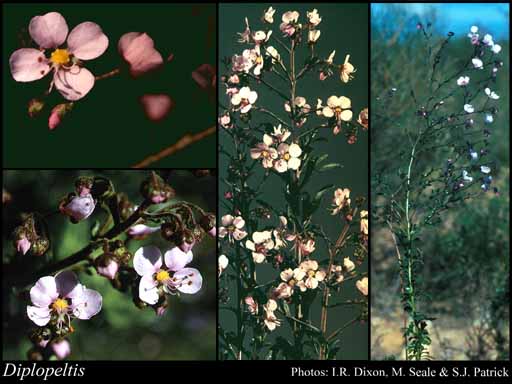- Reference
- Enum.Pl. p13 (1837)
- Name Status
- Current

Scientific Description
Common name. Pepperflower. Family Sapindaceae.
Habit and leaf form. Shrubs, or herbs; laticiferous, or non-laticiferous and without coloured juice. Annual, or perennial. Stem internodes solid. Mesophytic. Leaves alternate; spiral; petiolate, or sessile; non-sheathing; gland-dotted, or not gland-dotted; simple. Leaf blades dissected (pinnately or deeply divided), or entire; oblong to ovate, or obovate (or narrowly cuneate); when dissected, pinnatifid; pinnately veined; cross-venulate. Leaves with stipules (often), or without stipules. Leaf blade margins entire. Leaf anatomy. Hairs present; glandular hairs present. Branched hairs absent. Extra-floral nectaries absent. Stem anatomy. Secondary thickening developing from a conventional cambial ring, or anomalous.
Reproductive type, pollination. Fertile flowers functionally male and functionally female. Unisexual flowers present. Plants monoecious.
Inflorescence and flower features. Flowers aggregated in ‘inflorescences’; in panicles. The terminal inflorescence unit cymose. Inflorescences terminal; panicle raceme-like, with scorpioid racemes. Flowers pedicellate; bracteate; bracteolate, or ebracteolate; small; somewhat irregular to very irregular. The floral asymmetry involving the perianth and involving the androecium. Flowers 4 merous, or 5 merous; cyclic. Free hypanthium absent. Hypogynous disk present; extrastaminal. Perianth with distinct calyx and corolla; 9, or 10; 2 -whorled; isomerous, or anisomerous. Calyx present; 5; 1 -whorled; polysepalous; imbricate; unequal but not bilabiate, or regular; persistent; with the median member posterior. Sepals oblong, or ovate, or obovate. Corolla present; 4(–5); 1 -whorled; alternating with the calyx; not appendiculate; polypetalous, or gamopetalous; imbricate; unequal but not bilabiate, or regular; white, or pink, or violet. Petals clawed. Fertile stamens present, or absent. Androecial members definite in number. Androecium 8. Androecial members free of the perianth; free of one another; 2 -whorled, or 1 -whorled. Androecium of male-fertile flowers exclusively of fertile stamens. Stamens 8; all more or less similar in shape; diplostemonous; inside the disc; filantherous. Anthers dorsifixed, or basifixed; versatile; dehiscing via longitudinal slits; introrse; tetrasporangiate; appendaged, or unappendaged. The anther appendages apical (by connective extension). Fertile gynoecium present, or absent. Gynoecium 3 carpelled. The pistil 3 celled. Carpels reduced in number relative to the perianth, or isomerous with the perianth. Gynoecium syncarpous; synovarious to eu-syncarpous; superior. Ovary plurilocular; 3 locular; sessile. Gynoecium stylate. Styles 1; free, or partially joined; attenuate from the ovary, or from a depression at the top of the ovary; apical. Stigmas 1. Placentation axile to basal. Ovules 2 per locule; funicled, or sessile; pendulous, or horizontal, or ascending; arillate; hemianatropous, or anatropous, or campylotropous, or amphitropous.
Fruit and seed features. Fruit non-fleshy; dehiscent, or indehiscent (3 cocci fall entire in the Perth region); 2–3 celled; 1–2 seeded (per locule). Seeds non-endospermic. Cotyledons 2. Embryo curved, or bent, or coiled.
Etymology. From the Greek for "double" and "small shield"; the disc is produced into an apparently double scale.